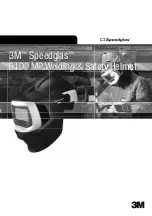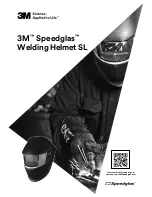
Tyre Pressure - 150 cc
2
Front
: 1.75 kg/cm (25.0 Psi)
2
Rear Solo
: 2.00 kg/cm (28.4 Psi)
2
Rear Pillion
: 2.25 kg/cm (32.0 Psi)
Dealer Development Center, Pune
12
Pulsar DTS-i 150/180 Training Notes
Dealer Development Center, Pune
13
Pulsar DTS-i 150/180 Training Notes
Read Before You Ride
Read Before U Ride
Function
• It gives indication of
side stand ‘ON’.
How to Operate
• This operates when
vehicle is put on side
stand & ignition is
‘ON’.
• Visual Signal :
Side stand indicator red lamp in speedometer
will glow, this is an indication that side stand is
to be removed.
Immediately put off side stand while taking vehicle for
a ride.
Benefits
• Great safety.
• Reminds you to put off side stand before riding.
Side Stand Indicator
Advantage
• Tubeless Tyre do not deflate suddenly in case
of puncture & helps in reducing unsprung mass.
Less rolling resistance ensures complete road
stability.
Benefits
• High stability.
• Ease of puncture repair. Can be done by self.
• Less maintenance.
Tubeless Tyre
(Applicable for 180 cc only)
Feature
• Car type self cancelling
indicators.
Advantage
• No manual operation for
p u t t i n g ‘ O F F ’ t h e
i n d i c a t o r s . A f t e r
completing the turn when the rider positions
handle bar straight ahead the indicators are put
‘OFF’ automatically.
Benefits
• Convenience & comfort.
Side Indicator
Feature
Low maintenance battery.
Advantage
No frequent charging. No frequent
top up.
Benefits
Low maintenance cost.
Battery
yourbike
ride
Fuel Saving Tips
• Drive in economy zone i.e. driving at a constant
speed @ 40~50 kmph in top gear.
• Avoid following :-
- Sudden pick-up & frequent braking.
- Needless & excessive idling.
- Excessive high speed riding.
• Check & Refill tyre pressure once in a week.
• Fill petrol at reputed petrol pumps.
Safe Riding Tips
• Always wear an ISI std. helmet while driving.
• Never use mobile phones while driving.
• Always keep rear view mirrors clean.
• Use both, front & rear brakes simultaneously.
Applying only one brake may cause loss of
control & skidding or diving.
• Do not apply front brake when cornering or at
turns.
• Familiarise yourself well with seating posture,
starting, acceleration & braking of the vehicle.
• Use side indicators before turning.
yourbike
care
How to Keep Battery Healthy
• Switch ‘OFF’ ignition when
engine is not running.
• Do not press brake pedal / brake
lever while running otherwise
brake light would glow continuously & drain the
battery.
• Do not switch ‘ON’ & ‘OFF’ ignition switch un-
necessarily.
• Get your battery checked / charged during
periodic services.
st
• Use choke if engine refuses to start in 1 attempt.
Battery
Fit and Finish Parts
• It is suggested to take proper care in heavy
monsoon / high rainfall area. The appropriate
surface preventive coat is to be applied to avoid
rusting / poor surface finish on account of
adverse atmospheric conditions.
• Clean and lubricate all the important parts as
detailed in a Periodic Maintenance Chart given
in Owner's Manual.
• Do not obstruct engine & engine oil cooler by
adding protection sheet from front otherwise
engine cooling system gets affected.
Monsoon Care
Tools & Material Used :
Repairing Tool (Wrench) - Used for
placing or piercing the repair
compound in place perfectly.
Repair Compound - Used for filling
the puncture. It forms bond with the
tyre compound after application.
Solution - Adhesive used for
applying the filler material (Few
compounds come with self adhesive
material also).
Blades - Used for trimming the extra
compound above puncture surface,
outside the tyre.
Filler
Wrench
Needle
Wrench
Puncture Repair Method (Filler Type)
Tubeless Tyre
(Applicable for 180 cc only)
Care and Maintenance of Tyre
• Ensure correct tyre pressure.
• Rim should be free from dirt, rust and should not
have any dents.
• Clean the tyre & rim interiors before placing the
tyre on rim.
• Lubricate tyre beads with mild soap solution
before assembling & removing the tyre from rim.
Process :
Wrench
Step 1 : Identify the puncture hole
and Pierce the wrench.
Repair Compound in Tyre
Step 2 : Pierce repair compound
into the puncture hole with needle
type wrench & pull out the wrench.
Cut Excess Compound
Step 3 : Cut the excess compound
with blade.
Tyre Pressure - 180 cc
2
Front
: 2.00 kg/cm (28.4 Psi)
2
Rear Solo
: 2.00 kg/cm (28.4 Psi)
2
Rear Pillion
: 2.15 kg/cm (30.5 Psi)
• Follow only recommended puncture repair
procedure for removing puncture.
• As far as possible use tyre mounting machine
for tyre fitting & removal of tyre from rim to
avoid damage to alloy wheels.
Recommended Oil Grade and Qty
Grade
SAE 20W40 of API ‘SJ’ or ‘SL’ +
For 150 cc
JASO ‘MA’ grade or superior.
Grade
SAE 20W50 of API ‘SJ’ or ‘SL’ +
For 180 cc
JASO ‘MA’ grade or superior.
Quantity
Drain & Refill 1000 ml.
Engine Overhaul 1100 ml.









































